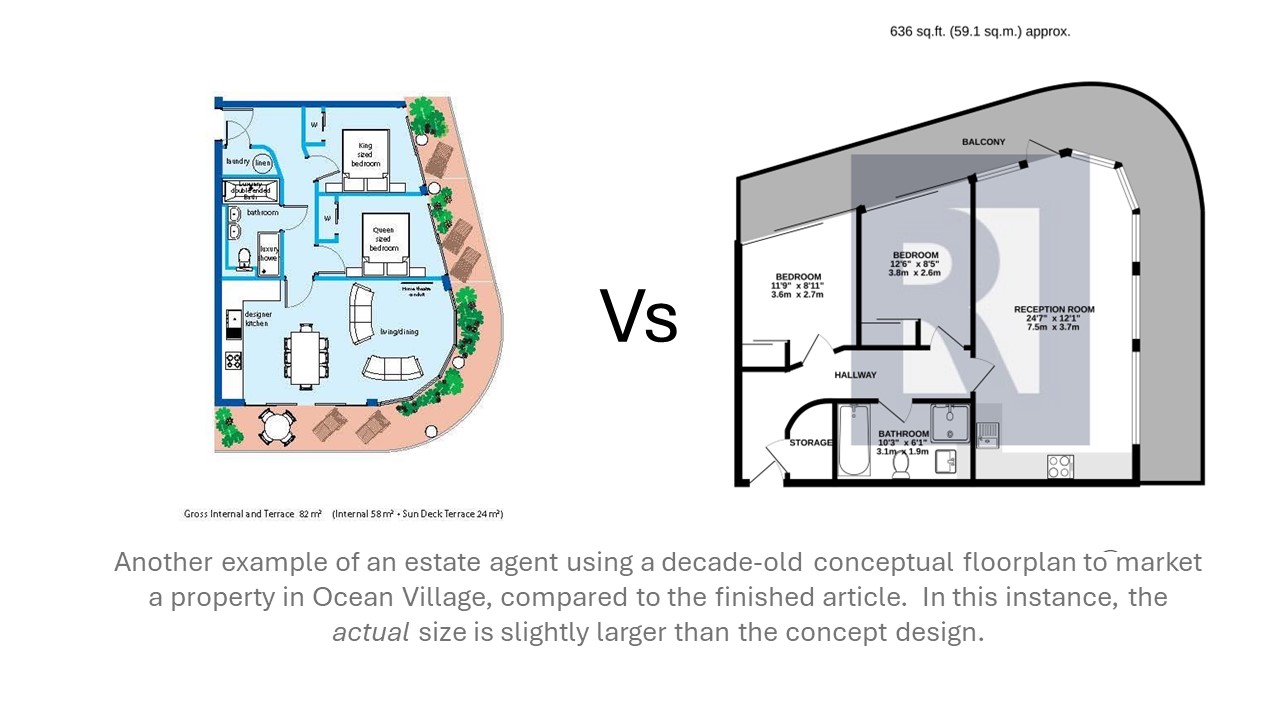Both serve distinct purposes and differ in various ways, such as their level of accuracy, the flexibility of design, and the certainty they offer. Understanding these differences is crucial for anyone considering investing in or purchasing property, as it affects decision-making, expectations, and overall satisfaction with the final product.
Definition and Purpose
An off-plan floorplan is a preliminary layout of a property provided by developers before construction has started or while it is still underway. This type of floorplan is used primarily as a marketing tool to attract potential buyers or investors. Off-plan floorplans are usually accompanied by digital renderings, artistic impressions, or 3D models to help potential buyers envision the property’s potential. The purpose of these floorplans is to generate interest and secure sales before or during the construction phase.
On the other hand, a real floorplan is a detailed and accurate depiction of a property as it exists after construction is complete. This floorplan reflects the actual layout, dimensions, and features of the finished property, including all structural elements, walls, doors, windows, fixtures, and fittings. It serves as an authoritative guide to the property’s exact specifications and is often used by architects, surveyors, and estate agents during resale or rental transactions..jpg)
Level of Accuracy and Detail
One of the most significant differences between the two lies in their level of accuracy.
Off-plan floorplans are inherently less precise because they are created based on early designs and architectural drawings. These plans provide a general overview of the property’s layout, but they may not reflect the final details accurately. For example, off-plan floorplans may use approximate measurements and may not include specific information about the placement of utilities or internal walls. Developers may adjust the designs during the construction phase due to practical considerations, such as site conditions, regulatory changes, or cost-saving measures.
Consequently, the final property may differ in several respects from the conceptual off-plan floorplan.
In contrast, real floorplans are much more accurate. They are created after the property is completed, ensuring they reflect the true layout of the finished building. Real floorplans provide exact measurements, including the precise dimensions of rooms, the location of doors and windows and thickness of walls. Unlike off-plan floorplans, real floorplans leave no room for ambiguity, providing a reliable representation of the property as it exists.
Flexibility and Potential for Changes
Another key difference is the degree of flexibility associated with each type of floorplan.
Off-plan floorplans have potential for change. Since these floorplans are created before construction is complete, developers and architects can make adjustments to the design based on regulatory requirements or unforeseen construction challenges. Developers may also need to make alterations to comply with local building codes or to address site-specific issues that arise during construction.
While some adjustments may be minor, others could significantly affect the property’s layout, size, or features.
In contrast, real floorplans represent the finished property. The layout is fixed, and any changes would require renovations once the purchaser completes. The advantage of a real floorplan is the certainty it provides. Buyers can be confident that what they see on the floorplan is exactly what they will get, with no risk of unexpected changes or alterations.
Legal and Financial Implications
The differences between off-plan and real floorplans also have important legal and financial implications.
When purchasing a property off-plan, buyers usually sign a contract based on the initial floorplan and other marketing materials. However, these contracts include clauses that allow developers to make changes to the design, layout, or specifications of the property during construction. While most contracts stipulate that changes must be “materially similar” to the original design, there is still a risk that the final product may not match the buyer’s expectations exactly.
With a real floorplan, there is much greater certainty regarding what the buyer is purchasing. The property has already been completed, so there is no risk of unexpected changes. This makes the transaction process more straightforward, as buyers can inspect the property in person, verify the accuracy of the floorplan, and make informed decisions based on the actual, finished product. The reduced risk of surprises or discrepancies makes real floorplans preferable for those who value certainty and clarity in their property transactions.
Marketing and Perception
From a marketing perspective, off-plan floorplans are designed to be aspirational. They focus on potential and promise, often emphasising open spaces, natural light, or luxurious finishes that may appeal to the target market. Developers may use off-plan floorplans to generate excitement and a sense of urgency, encouraging buyers to commit early in the process.
Real floorplans, however, are grounded in reality. They reflect the true characteristics of the property, including any limitations or imperfections. Real floorplans provide an accurate representation of the property, which is essential for buyers who place importance upon pound per square metre.
The NAEA frown upon the use of off-plan conceptual floorplans for resale properties, particularly when the interior or exterior dimensions are quoted. One of the problems we come up against in Gibraltar is the lack of regulation over marketing practices allows some potentially less scrupulous agents to continue using the off-plan conceptual plans years (or sometimes decades) after the property has been built.
Dimensions can only be taken with any level of accuracy with a real floorplan; measured once the property is built.
No matter what anyone tells you about the "official" size; the size is what it is, and that is the size on the real floorplan. This is not normally that disimilar, but we have seen variations as large as 8% in Gibraltar!
Conclusion
At Richardsons we deal with both off-plan and resale properties. Every built property listed for sale or for rent carries a RICS regulation 'real' marketing floorplan, with off-plan floorplans only used on... well... off-plan properties. We like to be as transparent as we possibly can ensuring our clients won't face the headaches of downvaluations by mortgage surveyors and our buyers & tenants can trust what they see.
Afterall, if a buyer realises the agent has fibbed over the internal dimensions, it raises more questions over what else they may be hiding.



.jpg)